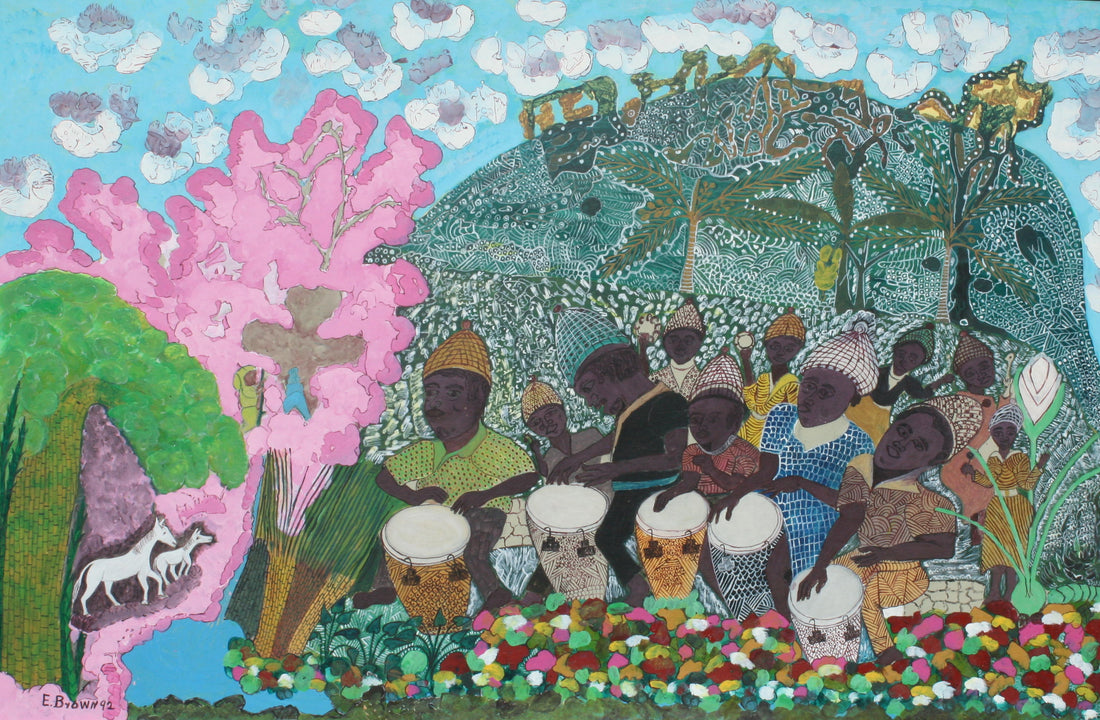First published: Autumn 2022
For Jamaican artist Brother Everald Brown, his spirituality, faith and family were integral to every part of his life
In 1968, Jeanette Grant-Woodham, a government folklife specialist in Kingston, Jamaica, visited a man who conducted music-filled pentecostal services with his family at their simple home on Spanishtown Road. A large, shed-like structure with a high zinc roof and wooden sides, that did not quite reach the roof or the ground, the space was known as “Assemble of the Living”. The 50-year-old Everald Brown – “Brother Brown” – his wife, Jenny, and their children performed poems and songs he had written, using musical instruments he had made. “We had a feast – the music, chanting, the shouts of praise and thanksgiving released our collective energies – it was powerful,” said Grant-Woodham.

Stem of Jesse, 1988, oil on hardboard, 24 x 31 in. / 61 x 78.5cm
She saw that the walls were lined with paintings – watercolour and crayon on paper – featuring spiritual symbols, and people such as the late Ethiopian emperor Haile Selassie I (revered by Rastafarians), and political activist and speaker Marcus Garvey. Grant-Woodham encouraged Brown to try painting with oils on more permanent surfaces. She also arranged for Glory-I Band – the charismatic Brown family’s musical group – to perform regularly on a TV show that she helped produce.

Brown on his porch, in 1993, strumming his star guitar, photo: Wayne Cox
Brown took her advice and began to paint on plywood and hardboard. Not long after, Olive Lewin, a musicologist at the University of the West Indies in Kingston, visited Brown and said:
“There were more than 100 creative expressions. I asked him how he managed his many responsibilities with his exceptional commitment to high artistic ideals. He said, ‘Teacher, God say I to paint ... God don’t have no hand. If I didn’t do the work He gave me to do, it can take God Himself 100 years to find the right hand again.’”

The Earth is the Lord, c. 1969, oil on hardboard, 30 x 48.5 in. / 76.5 x 123.5 cm, National Gallery of Jamaica
Brown said he had meant that literally. He said that he had received a vision from God instructing him to start painting and carving, and in a very specific way; that God told him that He had implanted, on all physical things, spiritual images and messages that were important for mankind to know. Apparently, these images were not visible to the naked eye but He saw in Brown the ability to see and record them, and He needed for that to be Brown’s life work. Brown saw himself much like an old-testament prophet to whom God shows an event, tells the prophet its meaning and expects the prophet to carry the message to others
By WAYNE COX
This is an article extract; read the full article in Raw Vision #112




